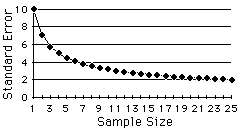IFA Index Calculator
Retirement Calculator
Target Date Calculator
Retirement Income
College Planning
T-Statistic Calculator
401(k) Calculator
Net Worth
Net Income
Roth IRA Conversion
Fee Calculator
Multi Funds Calculator

Calculating risk capacity is the first step to deciding which portfolio will generate optimal returns for each investor.
Each investor has a unique risk capacity and can be identified by a risk capacity score — a measure of
how much risk one can manage.